Accessible Wildness: Glacier National Park’s North Fork
5 Comments
Glacier National Park is renowned for its wildness, and the wildest part of Glacier is the North Fork. The most isolated section of the park that can be reached by vehicle, the region offers the adventurous photographer a chance to enjoy an experience away from the crowds.
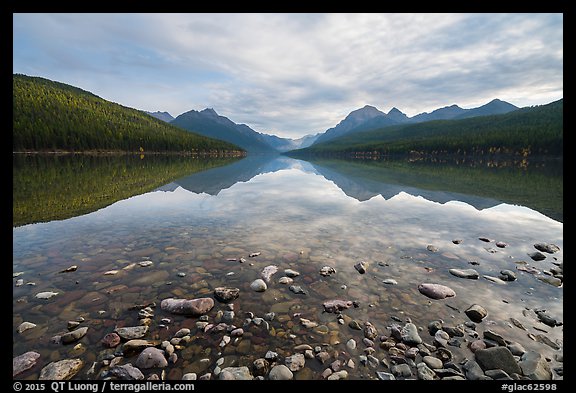
The NPS management plan for Glacier National Park states that North Fork visitor facilities will preserve a primitive character. It forbids commercial development and vows to keep the Inside North Fork Road narrow and unpaved. The visitation is greatly reduced by those rough roads. You won’t find the traffic of the Going-to-the-Sun road here! However, the Outside road is definitively passable by regular cars if driven carefully (the speed limit is 20 miles per hour). Last fall, the rougher Inside road was closed. You can drive right to the edge of Bowman Lake and Kintla Lake, the region’s highlights. The drive in itself is a great journey out of the beaten path.
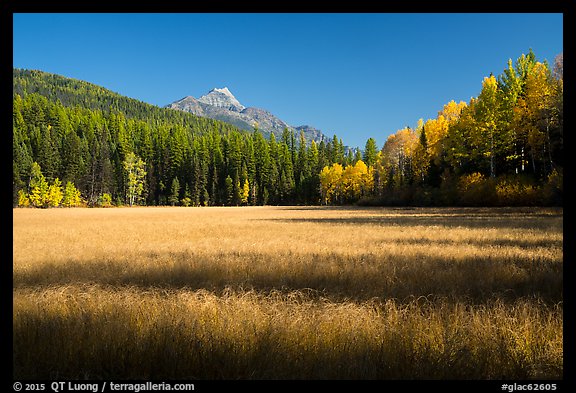
A mile from the park’s northwestern entrance, the rustic, off-the-grid outpost of Polebridge offers lodging and food, seemingly in the middle of nowhere. Because the camping stores in the park were closed, I couldn’t find a cartridge for my compact foreign stove, so I had to content myself with uncooked Ramen noodles for dinner. When I walked into the charming Polebridge Mercantile store, I was delighted to smell their array of freshly baked goods. They would be delicious anywhere, but were a particular treat there.
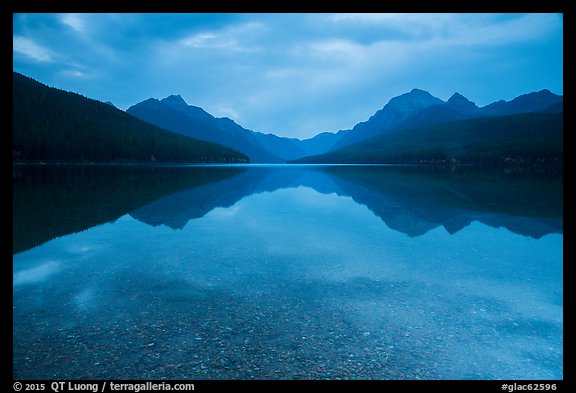
Bowman Lake is the third largest lake in the park, after Lake McDonald and Saint Mary Lake. It is close enough from Polebridge (6 miles via a bumpy, unpaved road) that you could stay there if you don’t want to camp. The campground is very quiet, but it is primitive. From my campsite, I rolled out of bed and walked to the shore.
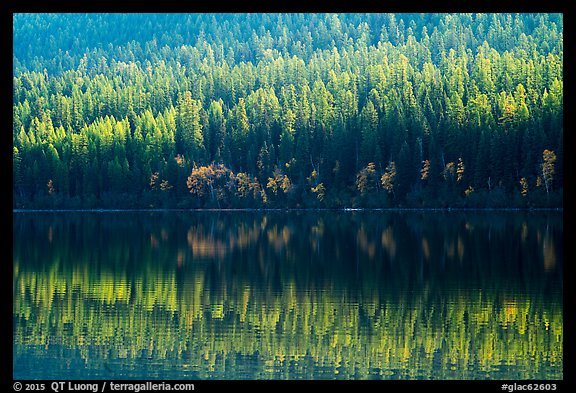
The peaks of the Continental Divide form spectacular backdrops on the eastern end of the lake. Due to the lake’s orientation, the light is normally good both at sunrise and sunset, but the sky was cloudy early, and cleared only in mid-morning. A few campers came to admire the view, but stayed near the boat launch. Walking along the untrameled shore east of it, I found a more interesting foreground with stones partly emerging from the water (opening image).
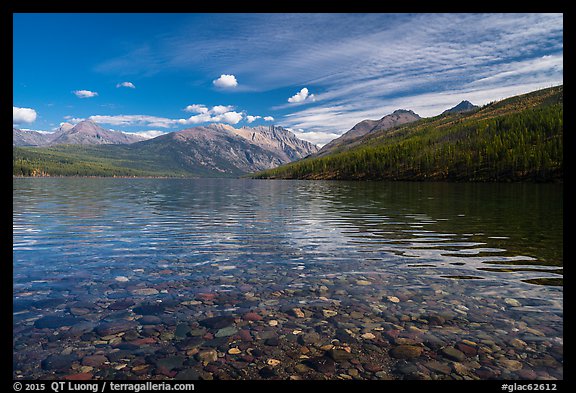
Kintla Lake, the fourth largest lake in the park, is only slightly smaller than Bowman Lake. Kintla Lake is even quieter than Bowman Lake. The small campground, Glacier National Park’s most remote frontcountry campground, is right at the edge of the water.
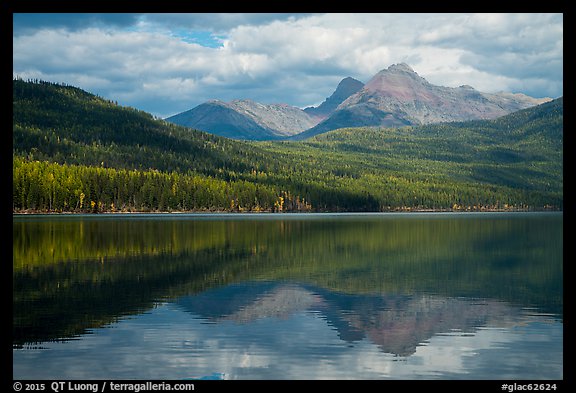
Unlike at Bowman Lake, no motorized boats are allowed, making it a great place to explore by kayak. However, I was glad that I did not get on the water that day. Only half an hour after I made the previous image, menacing clouds began to roll in. The wind calmed suddently before the rain. After taking advantage of the situation to photograph the reflections, I hopped in the car just as the first drops of water fell.
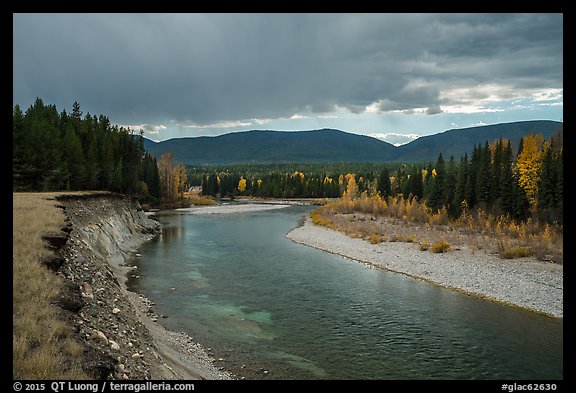
The 15-mile drive from Polebridge to Kintla Lake, on an unpaved road, takes about 45 minutes. Even if you didn’t visit the lake, it would be a rewarding journey through scenery not not found in the rest of the park, such as large meadows, and the North Fork of the Flathead River. Autumn colors along the way were beautiful at the beginning of October. Contributing to the sense of wildness, I did not see more than a dozen other cars along the whole road.
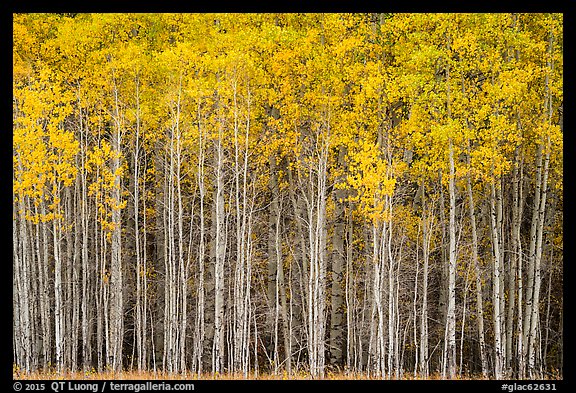
More images of Glacier National Park’s North Fork


Hello Tuan,
What time is typically ‘best’ for Fall colors in the North Fork? Or maybe a better way to ask it, what 2 weeks are the ‘usual’ times the colors change? Thanks, superb images!
Paul
Paul, I was there at the beginning of Oct. The aspen were good, but as you can see on the fourth image, the western larches were still green. The rangers say that they turn in mid-Oct. I always prefer slightly past-peak, so if I were to pick two weeks, I’d go 2nd & 3rd of Oct. The North Fork is lower elevation, so snow shouldn’t be a problem.
Tuan, thanks so much..that works out well in terms of hitting Colorado Fall colors first (mid-late September, first week of October) then heading up to Glacier. THANKS!
Paul
Not to be ignored are the numerous bears. On a trip to Glacier a few years ago, I limited my photo excursions to trails frequented by other hikers, not wanting to be the first photographer to surprise a Bruin.
Paul, you are entirely right. This year, the bears had less berries to eat, so as a result they were more aggressive than usual. I limited drastically the amount of hiking on this trip. Fortunately, on the North Fork, you don’t have to hike to get away from well-trodden areas.